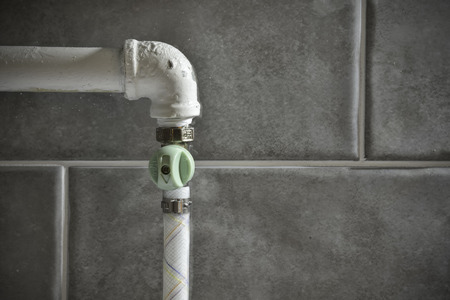1. Understanding Frozen Pipes in the UK
Frozen pipes are a recurring issue for many British households, particularly during the harsh winter months. The UK’s climate is characterised by frequent cold snaps, especially between December and February, when temperatures can dip below freezing. Many traditional British homes, especially those built before the 1980s, have inadequate insulation and older plumbing systems that make them particularly susceptible to frozen pipes. Additionally, water pipes are often installed in unheated areas such as lofts, garages, or external walls, further increasing their vulnerability. The combination of unpredictable weather patterns and typical housing structures creates the perfect conditions for pipes to freeze, causing inconvenience and potentially costly damage if not addressed promptly.
Immediate Steps When You Discover Frozen Pipes
Discovering frozen pipes in your UK property can be stressful, but taking swift and informed action is essential to minimise damage and costly repairs. Here’s what every UK resident should do as soon as a frozen pipe is suspected:
Turn Off the Stopcock
The first priority is to turn off your main water supply at the stopcock. This valve is usually found under the kitchen sink or where the water main enters your house. Shutting it off immediately helps prevent flooding in case the pipe bursts once it thaws.
Inspect for Splits and Leaks
Carefully check exposed pipes for visible splits, cracks, or bulges—common signs of ice expansion within the pipe. If any damage is found, keep the stopcock closed and contact a qualified plumber straight away to avoid further issues.
Prevent Further Damage
If no immediate damage is detected, you can take steps to gently thaw the pipe yourself. Avoid using open flames or high heat, as this can cause more harm than good. Instead, use a hairdryer on its lowest setting, a hot water bottle, or towels soaked in warm water applied directly to the pipe. Start at the tap end and work towards the frozen section to allow melted water to escape safely.
Quick Reference Table: Immediate Actions
| Step | Action | Purpose |
|---|---|---|
| 1 | Turn off stopcock | Stops water flow to prevent flooding |
| 2 | Check for splits/leaks | Identifies urgent repairs needed |
| 3 | Gently thaw pipes | Avoids sudden bursts by gradual warming |
| 4 | Call a professional if needed | Ensures safe and proper repair work |
Tip for UK Residents:
If you live in an older property or one with external pipes, knowing where your stopcock is located and ensuring everyone in your household does too is a valuable investment in home safety during cold snaps.

3. Effective Solutions for Thawing Frozen Pipes
When faced with frozen pipes in your UK home, taking prompt and careful action is crucial to prevent costly damage. Here’s a step-by-step guide to safely thawing pipes using methods suitable for British properties, along with advice on when to seek professional help.
Step 1: Identify the Frozen Section
Begin by turning off the water supply at the stopcock to prevent flooding if the pipe bursts. Look for sections of piping that are unusually cold, frosted over, or bulging—these are likely frozen.
Step 2: Open Taps
Open the affected taps slightly. This relieves pressure in the system and allows water to flow once the ice starts melting, reducing the risk of pipe rupture.
Step 3: Gradual Warming Techniques
Use Gentle Heat Sources
Apply heat slowly to the frozen area using a hairdryer, hot water bottle, or a towel soaked in warm (not boiling) water. Always start nearest the tap and work backwards towards the coldest part of the pipe so melted water can escape. Never use naked flames or blowtorches as they present a serious fire hazard and could damage pipes.
Electric Pipe Thawing Devices
If you have access to a specialist electric pipe thawer designed for domestic use, this can be effective. Ensure you follow manufacturer instructions and observe all safety precautions.
Step 4: Monitor Progress and Check for Leaks
As the ice melts, watch for any leaks or cracks in the pipework. If you notice any water escaping, immediately turn off your water supply and seek professional assistance.
Step 5: When to Call a Qualified Plumber
If you are unable to locate or access the frozen section, if pipes remain blocked after attempted thawing, or if you detect any leaks or bursts, it’s essential to contact a certified UK plumber without delay. Attempting complex repairs yourself could worsen the issue or invalidate home insurance policies.
Investment in Professional Support
While DIY solutions can resolve minor freezing incidents, investing in expert plumbing services ensures peace of mind and long-term protection against future problems—often saving money compared to emergency repairs following significant water damage.
4. How to Prevent Your Pipes from Freezing
For UK homeowners, prevention is always more cost-effective than dealing with the aftermath of frozen or burst pipes. The UK’s often unpredictable and damp winter climate means that even a brief cold snap can cause significant plumbing issues if you’re unprepared. By adopting some proactive strategies tailored to British homes, you can mitigate the risk of frozen pipes and avoid costly repairs.
Lagging Pipes: The First Line of Defence
Insulating – or lagging – your pipes is one of the most effective ways to prevent freezing. This is especially important for exposed pipework in lofts, garages, basements, or external walls, which are all common in UK properties. Pipe lagging is readily available at DIY stores and easy to fit yourself. For added protection, pay special attention to bends, joints, and outdoor taps.
Maintaining Ambient Temperature
Keeping your home at a consistent temperature is crucial during cold spells. In the UK, it’s advisable to set your thermostat to at least 12°C, even if you’re away, to prevent internal temperatures from dropping too low. Central heating systems with timer functions make this easy and energy-efficient. If you have rooms that are rarely used or north-facing, consider keeping their doors open to allow warm air circulation.
What To Do When You’re Away from Home
If you plan to be away during winter – whether for a weekend break in the Lake District or an extended holiday abroad – take extra precautions:
| Action | Benefit |
|---|---|
| Leave heating on a low setting | Keeps water flowing and prevents freezing |
| Ask a neighbour to check your property | Early detection of problems reduces damage risk |
| Turn off the stopcock and drain system | Avoids water build-up if pipes do freeze and split |
| Open loft hatch slightly | Allows warm air to circulate around pipes in unheated spaces |
Smart Investments: Pipe Monitoring Technology
The rise of smart home technology in the UK market presents new investment opportunities for homeowners who want peace of mind. Smart leak detectors and remote temperature sensors allow you to monitor pipe conditions via your smartphone – ideal for landlords or frequent travellers seeking extra assurance.
Summary: Prevention Saves Money and Hassle
Taking these preventative steps not only protects your property from expensive damage but also preserves its long-term value—a key consideration for investors in Britain’s competitive housing market. Effective pipe protection is a small upfront investment that pays dividends in resilience and peace of mind during the coldest months.
5. Insurance Implications and Legal Responsibilities
When it comes to frozen pipes, understanding your insurance cover and legal responsibilities is crucial for homeowners, landlords, and tenants across the UK. Most standard home insurance policies in the UK do provide protection against water damage caused by burst pipes due to freezing temperatures. However, insurers often stipulate that policyholders must take ‘reasonable care’ to prevent such incidents. This typically means keeping the heating on during cold snaps or draining the system if a property will be left unoccupied for an extended period.
For landlords, the legal duty under the Landlord and Tenant Act 1985 includes ensuring that water supply systems are maintained in good repair and working order. If a tenant suffers loss or damage due to landlord negligence—such as failing to insulate exposed pipework—the landlord could be held liable for repairs and compensation. On the other hand, tenants are generally expected to use the property responsibly. This may include informing the landlord promptly if there’s a risk of pipes freezing, especially during severe weather warnings.
If you’re letting out a property, it’s wise to review your buildings insurance policy and consider additional landlord insurance options that specifically cover escape of water events linked to frozen pipes. Tenants should also check whether their contents insurance covers possessions damaged by water leaks.
In summary, both prevention and prompt action are key to avoiding disputes and unexpected costs. Make sure you’re familiar with your policy wording and communicate clearly with all parties involved—this proactive approach can help ensure everyone remains protected during the winter months.
6. Cost Considerations and Long-Term Value
When it comes to frozen pipes in the UK, the financial implications can be significant—both in terms of immediate repair costs and the potential long-term impact on property value. Burst pipes are a common insurance claim during the British winter, often resulting in thousands of pounds worth of water damage, ruined interiors, and prolonged disruption to daily life. For landlords and homeowners alike, this can translate into not only direct outlays for emergency plumbers and restoration services but also increased insurance premiums and even reduced market appeal if issues are recurrent or poorly resolved.
From an investment perspective, neglecting to address or proactively prevent frozen pipe incidents can lead to devaluation of your property. Prospective buyers are increasingly savvy about hidden risks, particularly in older homes or those located in regions prone to harsh frosts. Properties with a history of water damage may attract lower offers, experience longer times on the market, or require costly upgrades prior to sale. In contrast, properties that have clear evidence of preventative measures—such as modern pipe insulation, smart thermostatic controls, or even upgraded plumbing systems—are likely to command a premium in today’s competitive housing landscape.
Forward-thinking homeowners should view preventative investments not as sunk costs but as value-adding enhancements. Simple steps like lagging exposed pipes, installing frost protection devices, or upgrading to more robust piping materials can pay dividends by reducing risk and enhancing peace of mind. Smart home solutions—such as leak detectors or remote heating controls—are growing in popularity across the UK, offering both convenience and a tangible selling point for future buyers. Ultimately, investing now in robust prevention strategies positions your property as resilient and well-maintained—a compelling proposition whether you’re looking to safeguard your asset or maximise its long-term return.
7. Local Resources and Professional Support
When dealing with frozen pipes in the UK, knowing where to turn for professional help is crucial. If your efforts to thaw pipes are unsuccessful or you suspect a burst, it’s important to act quickly by engaging certified tradespeople. The UK has rigorous standards for plumbing work, so always seek out Gas Safe registered engineers or plumbers accredited by bodies such as the Chartered Institute of Plumbing and Heating Engineering (CIPHE). Using reputable platforms like Checkatrade, TrustATrader, or Which? Trusted Traders can help you find verified professionals with strong local reputations. Additionally, most local councils provide lists of approved tradespeople or offer emergency support lines for urgent situations, especially during severe weather events. Don’t overlook your water supplier—many regional providers have helplines and online resources dedicated to winter emergencies and may offer guidance or temporary support if your property’s supply is affected. Investing in reliable professionals not only ensures repairs are up to British standards but also gives you peace of mind that preventative measures will be properly installed for future winters.

